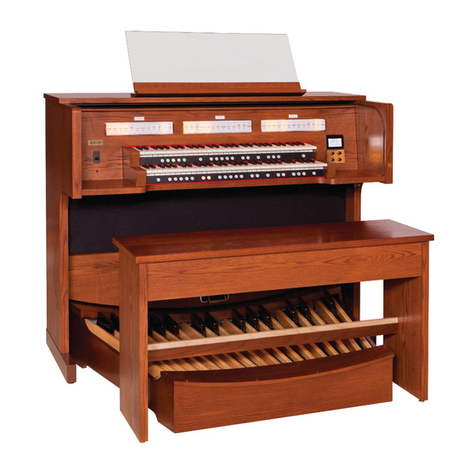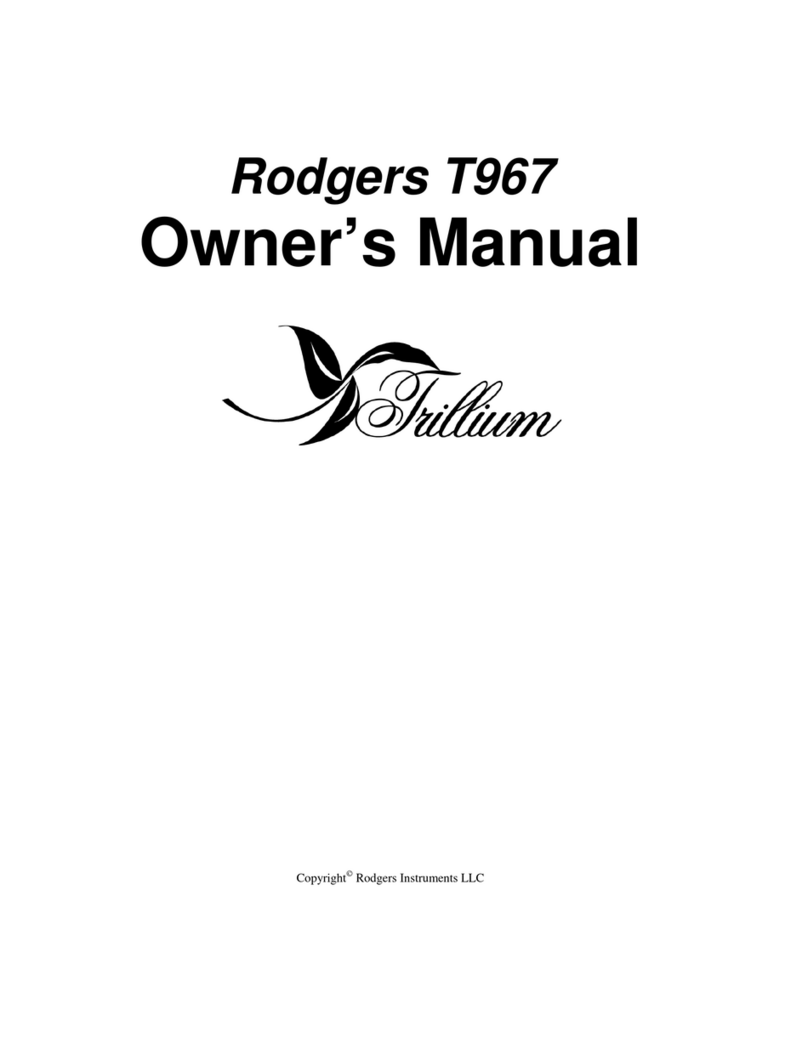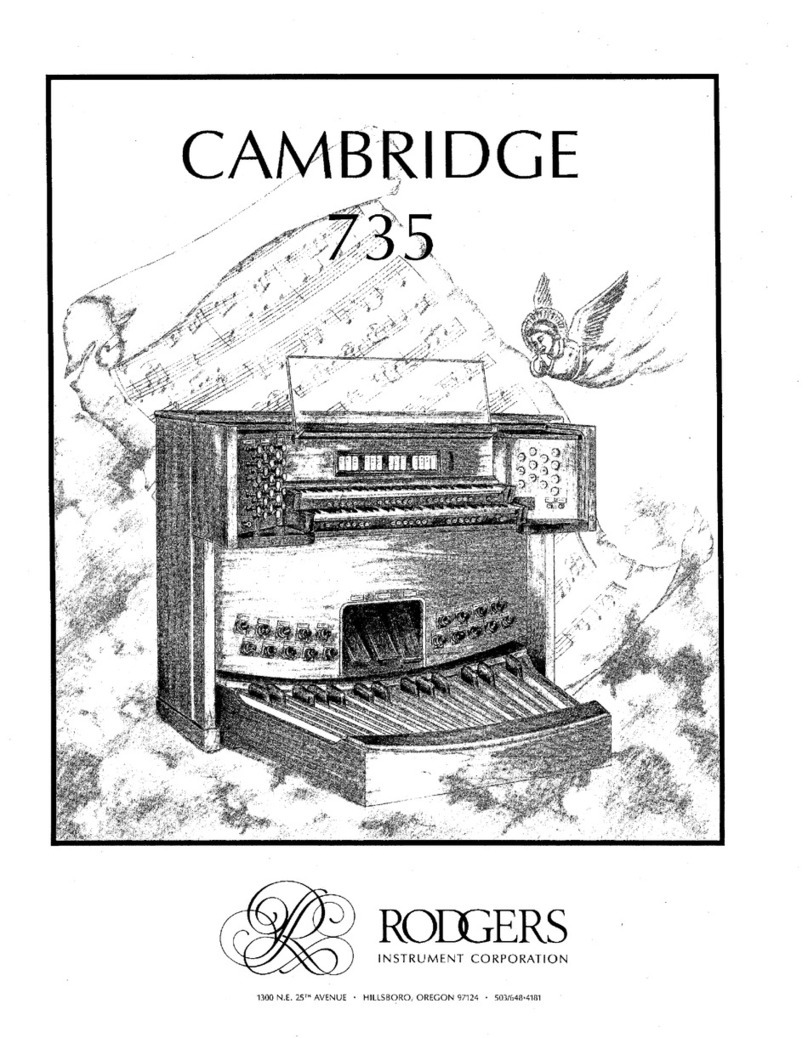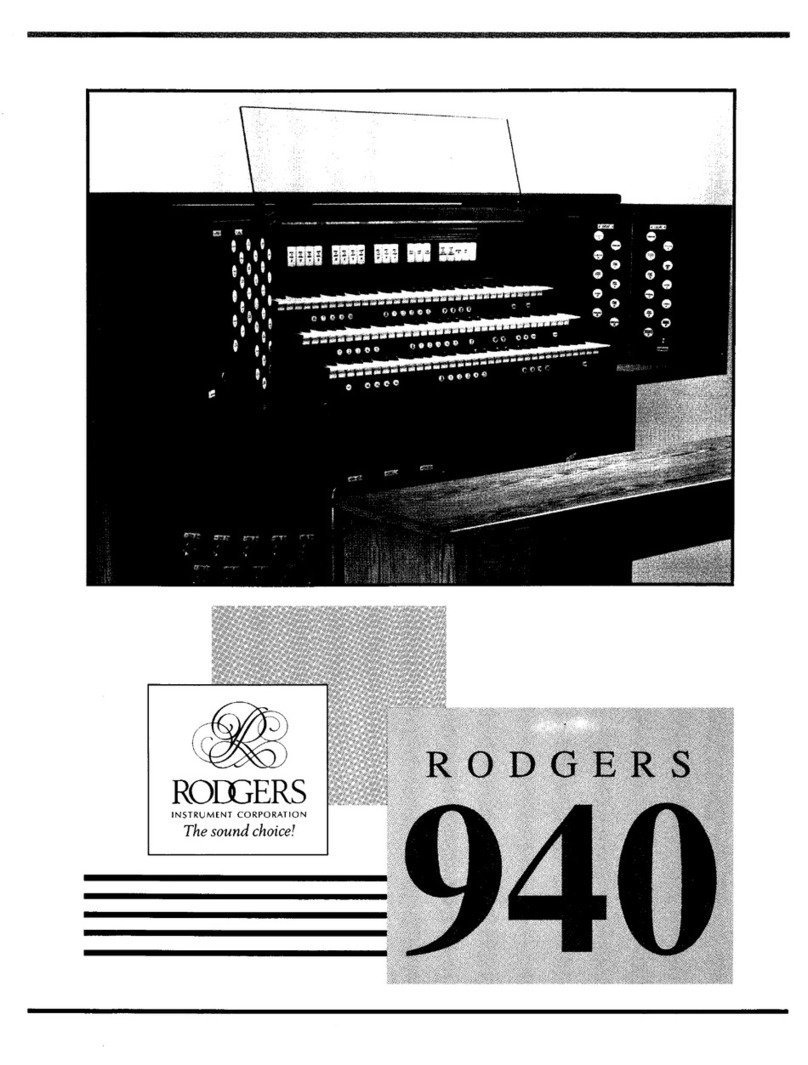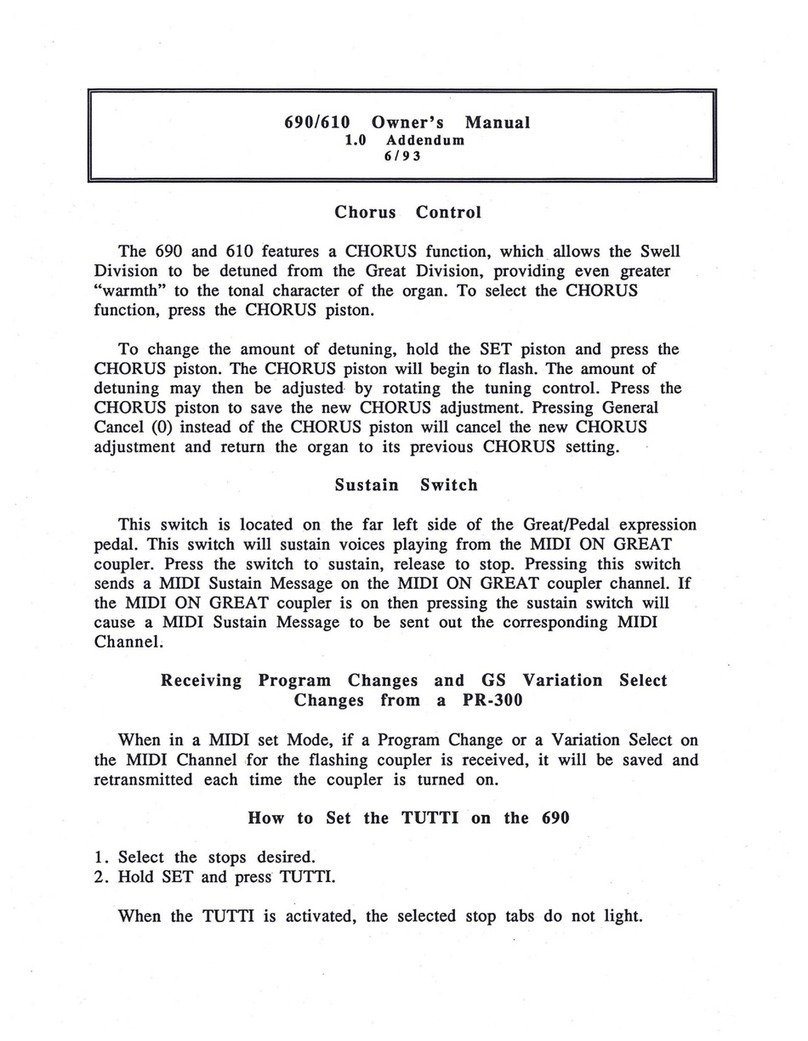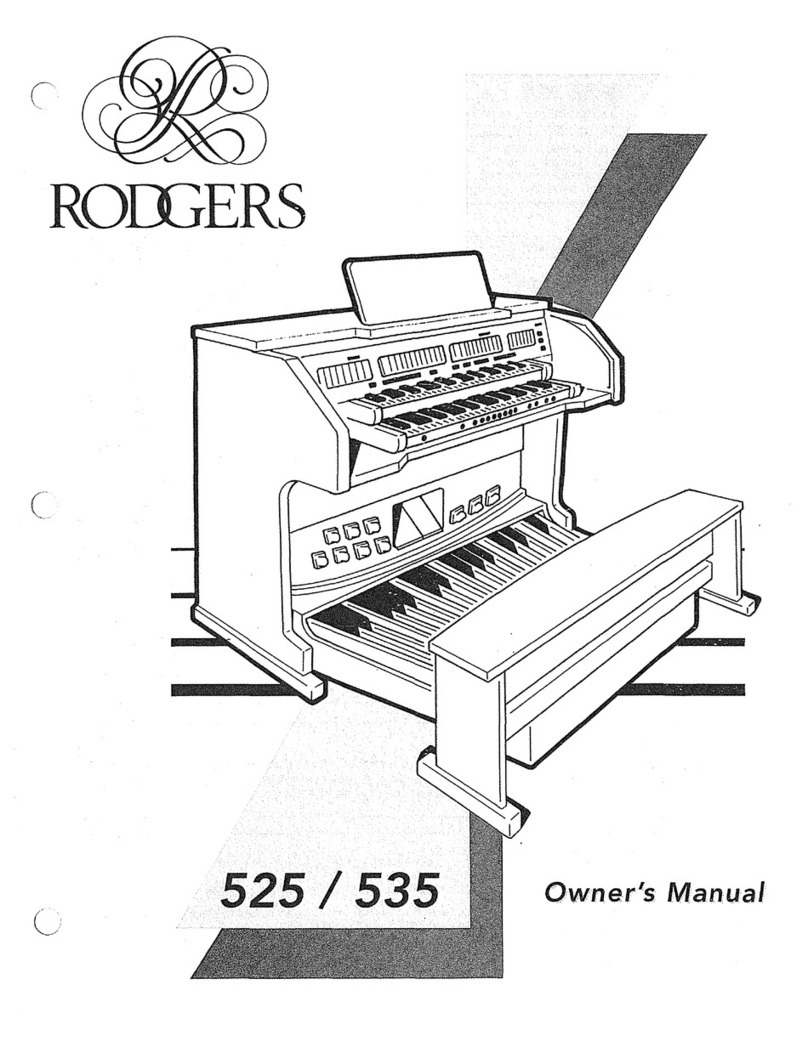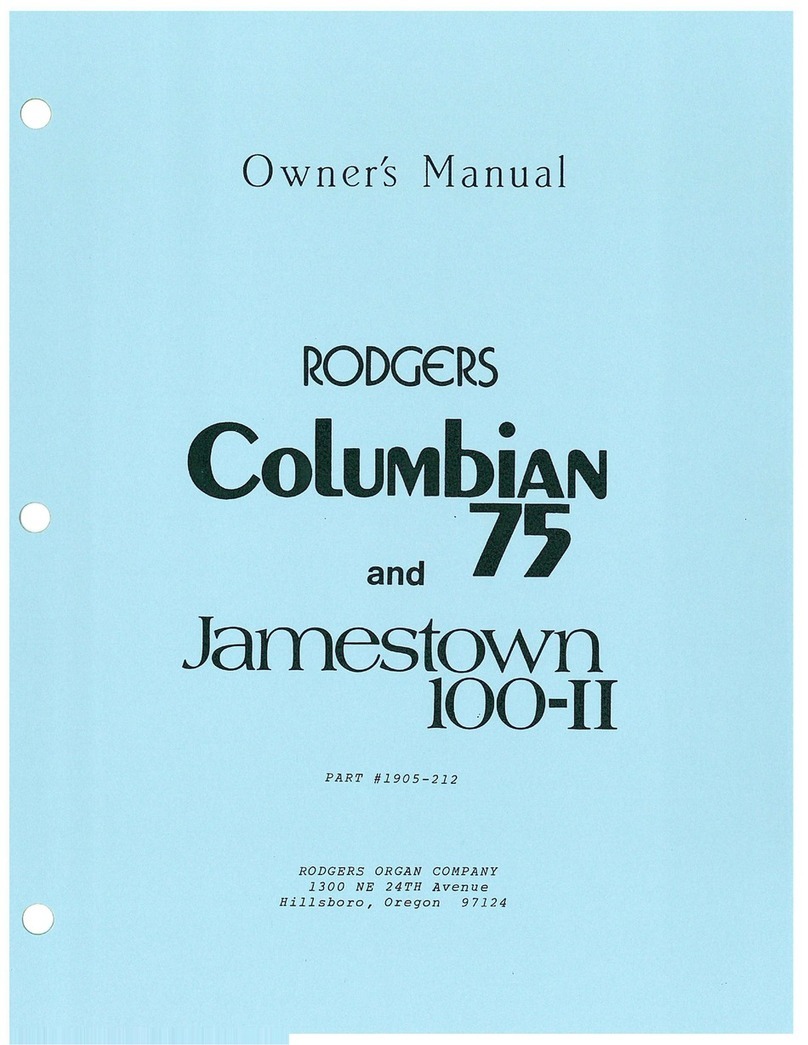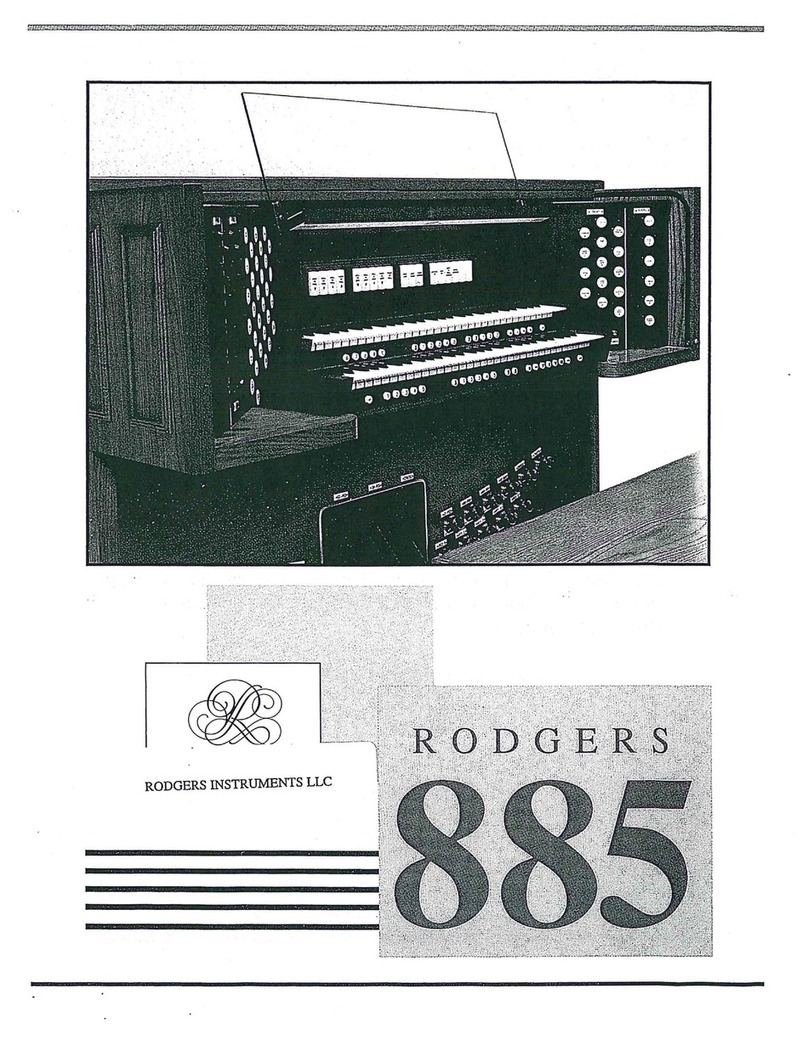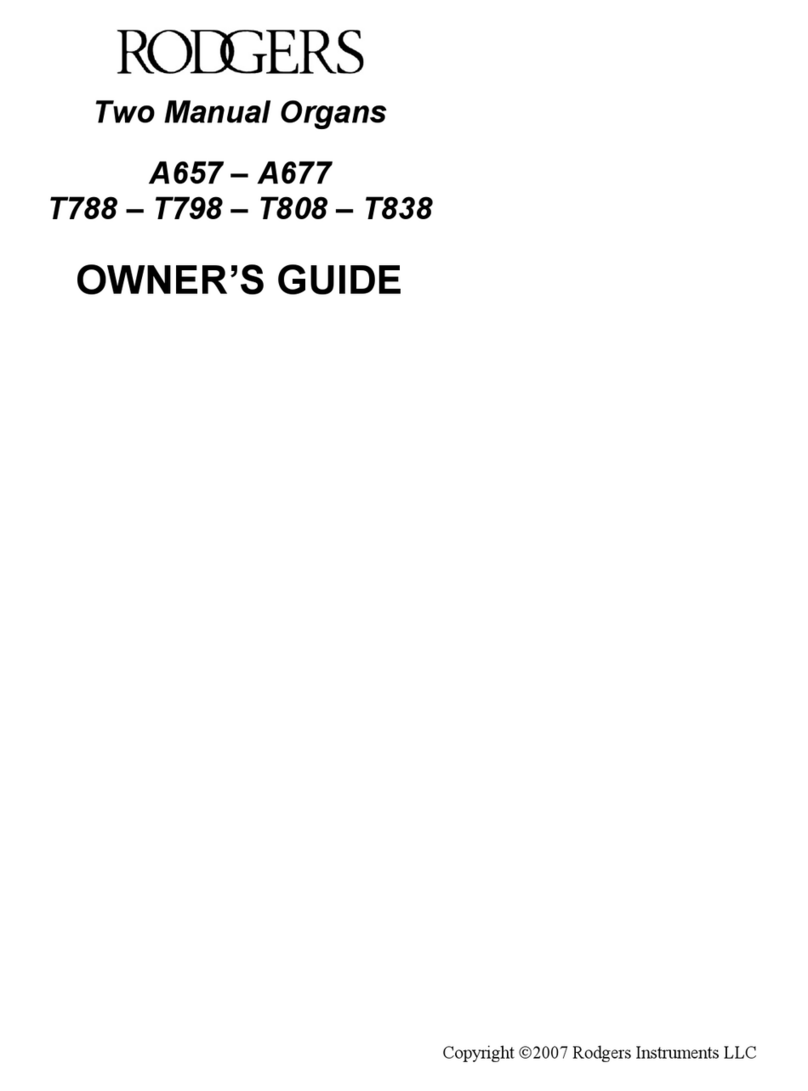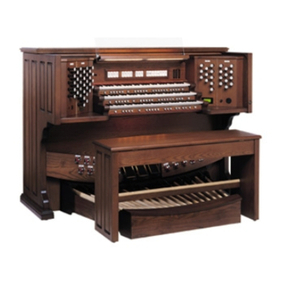
vii
Storing Additional Settings on a SmartCard......................................................................33
Deleting Settings from a SmartCard..................................................................................33
Deleting a Memory Level from a SmartCard ....................................................................33
Using your SmartCard on Other Rodgers Organs .............................................................33
About Stop Families ................................................................................................................34
Other Families..........................................................................................................................34
Pitch Designations ...................................................................................................................35
Celeste ranks............................................................................................................................36
More about Couplers................................................................................................................36
Intermanual couplers..........................................................................................................36
Pedal/Great Piston Coupler................................................................................................36
Temperaments..........................................................................................................................37
Ancient Temperaments......................................................................................................37
Well Temperaments...........................................................................................................37
Selecting a Temperament...................................................................................................38
Digital Dynamic Wind™..........................................................................................................39
Wind Supply ............................................................................................................................39
Adjusting Wind Supply......................................................................................................39
Random Detuning....................................................................................................................40
Shutter Thickness.....................................................................................................................40
Setting Shutter Thickness ..................................................................................................41
Voice Palette............................................................................................................................42
Making a Voice Palette Selection......................................................................................42
Resetting Voice Palette Selections.....................................................................................44
Master Volume Control ...........................................................................................................44
Adjusting Master Volume..................................................................................................44
Audio Save...............................................................................................................................45
Saving Audio Control Settings..........................................................................................45
Stereo Headphone Jack............................................................................................................45
Adjusting Headphone Settings...........................................................................................45
Auxiliary Controls ...................................................................................................................46
Adjusting Auxiliary Inputs ................................................................................................46
Room Modeling.......................................................................................................................48
